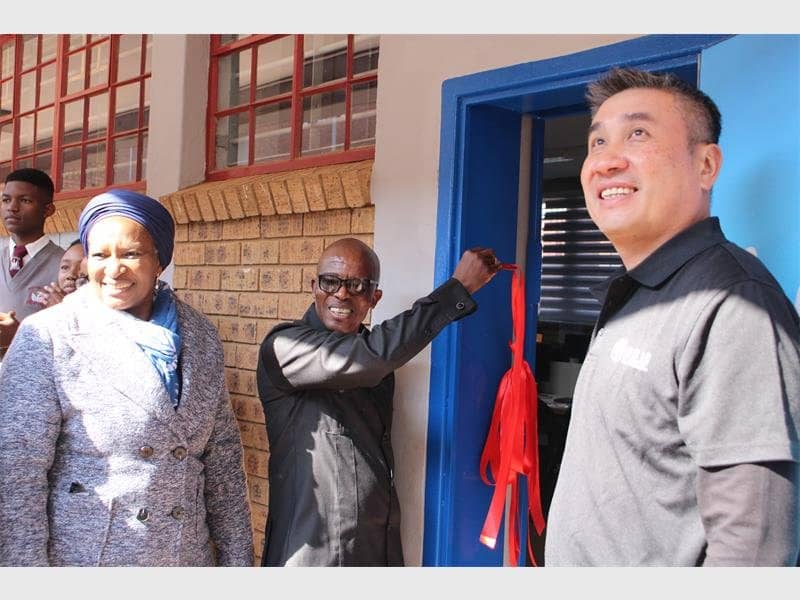The backlog of subsidised public housing in South Africa is estimated at 2.4 million. In this interview, Hlengiwe Maila, a research fellow at the School of Public Management and Administration at the University of Pretoria, answers questions posed by associate professor Adrino Mazenda about possible solutions. Maila’s PhD thesis, which was jointly supervised by Mazenda and Professor Lianne Malan, focused on developing a new model for the South African housing sector.
What’s the current system and what’s wrong with it?
Currently, public housing is built on the basis of contracts issued by the government. But the model is failing.
First, it has become financially unsustainable for the government. This is evident in the shrinking budget for housing.
Second, the number of houses being delivered has declined, from 75,000 units in 2019 to 25,000 units in 2023. Yet the demand for housing is increasing.
Third, using contractors to build subsidised housing often results in poor workmanship. The focus is on mass delivery (quantity) and less on quality.
Fourth, the contractor model keeps people dependent on the government.
Fifth, the model is prone to corruption and political interference. Public officials and politicians award housing along party lines or as part of corruption networks.
Lastly, the model doesn’t address the needs of communities. People are often allocated a house far away from where they live. They’re uprooted from their livelihood strategies and social networks.
Is there an alternative?
I set out the case for a co-productive approach.
Co-production is a cooperative approach to delivering public goods and services. Instead of a top down approach of a single provider (state, market or NGO), it involves the people who receive the services.
Co-production can involve beneficiaries throughout the project’s design, planning, implementation and maintenance. This results in a sense of ownership of projects and a value for the services co-produced.
It would usually take the form of future residents of a planned housing project taking part in community meetings, surveys and workshops where they can share their housing preferences, priorities and concerns. Architects, urban planners and other experts would incorporate the feedback into the design of the homes. The design would reflect the residents’ needs around accessibility, community spaces, and cultural or social factors.
Beneficiaries would also help to identify potential locations for the housing project and offer input on the community’s layout. They would contribute to decisions about communal amenities such as gardens, childcare facilities or green spaces.
They could volunteer their labour or skills directly in construction, or oversee the quality of work.
After construction, beneficiaries might help maintain the housing project through community-managed services, like repairs, cleaning, or organising events. This fosters a sense of ownership.
Why is co-production a better approach?
Co-production empowers residents, sustains projects, and strengthens community ties.
For example, the government’s role in Bangladesh has changed from providing housing to facilitating locally driven housing co-production. It does this through a low-income housing loan.
In the Bijlmermeer neighbourhood of Amsterdam, Netherlands, government and local stakeholders took a co-production approach to regenerate the area. Residents got involved in everything from design to management and decision-making. This improved public spaces, housing quality and social integration in a place that initially faced high poverty rates and social unrest.
In Kigali, Rwanda, the government set up urban planning and housing projects involving the local community. These projects focus on slum upgrading and new affordable housing.
One of the advantages of housing co-production is the introduction of new resources. They can be financial or in terms of capacity, knowledge or technologies.
Other advantages include:
-
greater acceptability of the process by the community
-
better use of existing skills and resources within the community
-
better trust and confidence between all parties
-
an improvement in the relationship between communities and government officials
-
a greater sense of belonging and ownership.
But are people willing to participate?
South African citizens have repeatedly shown their willingness to contribute towards providing their shelter and not be bystanders or passive recipients. Many South Africans engage in self-help housing projects: they build their homes from scratch, often using recycled materials.
Other initiatives, such as the Abahlali baseMjondolo movement, involve shack dwellers who mobilise for land rights and proper housing, and against forced evictions. These initiatives take collective action on housing issues.
In some areas, especially after natural disasters or urban fires, communities have come together to rebuild homes, distribute food and support displaced families.
However, past studies have shown that public officials may mistrust ordinary people’s skills and experience.
According to most respondents in my PhD study, NGOs, private organisations, civic groups and movements representing communities were willing to partner with the government on housing co-production. But they met resistance from public officials, in local municipalities and housing departments. This was mostly due to lack of capacity and resources.
One respondent in the PhD research said:
the bureaucrats get impatient with managing community dynamics, because when you get communities involved, things may move slowly. But, over time, communities have shown that where they are involved, they protect the asset.
What are the barriers to this model?
The housing co-production model might experience the following challenges:
Inadequate community mobilisation and participation: Co-production requires a high level of community involvement and commitment.
Financial mismanagement & inadequate funding: Insufficient and poorly managed funding can derail any development project.
Infrastructure and general service delivery: Without reliable access to clean water, sanitation and electricity, the homes will not be sustainable.
Political and institutional challenges: Successful co-production requires strong collaboration and communication. Political tensions and institutional fragmentation can undermine the project’s success.
Unrealistic expectations: The community may lack the resources and infrastructure to achieve its goals, leading to frustration and disengagement.
What needs to be done?
All the actors or stakeholders involved must be willing to co-produce. Co-production requires a change in the relations and behaviour of public servants and citizens or users.
They must trust each other and have clear roles and responsibilities so they can hold each other accountable.
Government must respond to communities’ specific needs, which vary based on geographical, social, economic and cultural factors.
Adequate resources – both financial and human – must be committed.
The government has to ensure that users remain involved throughout the project phases.
Government employees and community members need training to equip them to manage projects together.
Finally, online consultations, crowdsourcing ideas and digital feedback monitoring systems should be established to track progress.

